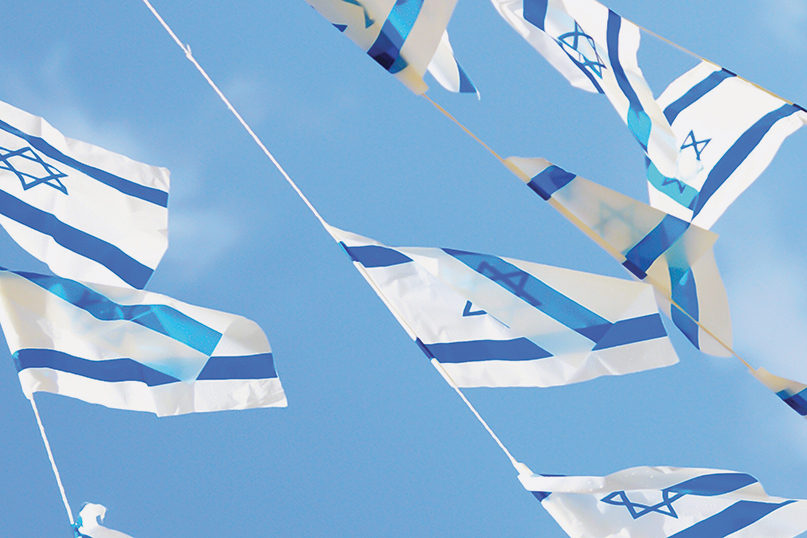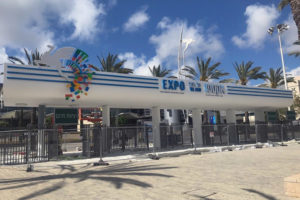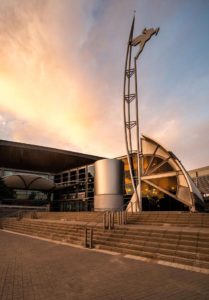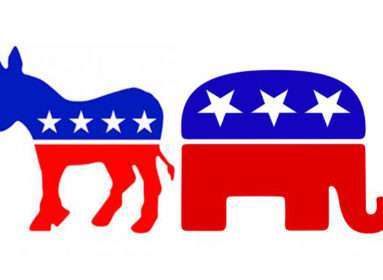
On the evening of Tuesday, May 7 – 4 Iyar 5779 – the State of Israel will begin a day of remembrance in honor of its fallen soldiers and victims of terrorist attacks with ceremonies held throughout the country. Fittingly, the next evening, May 8, as Yom Hazikaron – Israel Memorial Day – comes to a close, the Israeli people, and Jews throughout the world, will begin the celebration of Yom Ha’atzmaut – Israel Independence Day. The following articles were reprinted from Israel21c (israel21c.org)
When Camels Fly
How Tel Aviv’s Levant Fair came to host Eurovision
By Rachel Neiman
This week, Tel Aviv welcomed the first of the contestants in the 2019 Eurovision Song Contest, here to rehearse in preparation for the competition which commences on May 14.

Those attending Eurovision will enter through the new main gate that bears the familiar Flying Camel logo designed for Expo Tel Aviv’s progenitor, the Levant Fair, almost a century ago.
They may not be aware that their venue – the Expo Tel Aviv, formerly called the Tel Aviv Fairgrounds – has a history that stretches back almost to the city’s founding, with a symbol that has become wholly identified with the “nonstop city.”
Since the mid-19th century, expositions and fairs have been an engine for trade and relations between countries.
In an essay entitled “Semiotics and the Levant Fairs of Palestine,” philatelic historian Dr. Arthur Groten writes, “Early in the 1920s, there were several small local fairs, usually in Haifa, devoted solely to the agricultural products of Palestine. Initially, the Palestinian Levant Fairs were known as the Near East Fairs. Four were held from 1925 to 1929 and were distinguished from the earlier fairs in being general exhibitions for industrial and commercial, as well as agricultural, products.”
The second Near East Fair, held in the spring of 1926, adopted a logo: a gazelle leaping over a 19th-century ship to represent trade. By the time of the third fair that fall, the gazelle was flanked by wings at the top, symbolizing speed and commerce, and an anchor at the bottom, according to Groten. For the fourth fair in 1929, “the logo was changed from the leaping gazelle to an image of the modernist headquarters of the Fair promoters with a modern ship docked nearby.”
The fifth Near East Fair and first international “Levant Fair” took place in April 1932 at the harbor of what was still, at that time, the township of Tel Aviv. (Two years before city status was attained.)
To celebrate the ideal of international commerce, a new logo was designed by architect Arieh Elhanani – a flying camel, an image that has become emblematic of the spirit of Tel Aviv.
Groten writes: “There is an apocryphal tale that when Mayor [Meir] Dizengoff first proposed hosting, at Tel Aviv, a true ‘Levant Fair’, such as those held throughout the Near East, he was told by the Mayor of Jaffa that it would happen ‘when camels fly.’ Thus, we have the use of the Flying Camel as its logo now that the Fairs were well established and successful.”
The 1932 Levant Fair was a great success, attended by 285,000 people, including the British High Commissioner for Palestine and the Arab mayors of Jaffa and Jerusalem. The exhibitor list numbered 831 foreign firms; there were international pavilions representing Bulgaria, Cyprus, Egypt, Great Britain, Latvia, Poland, Romania, Switzerland, Turkey, and the USSR. By popular demand, the closing date was extended to early May.
However, the fairgrounds consisted of temporary structures. The Levant Fair needed a permanent home. In 1933, ground was broken for the first Tel Aviv Fairgrounds adjacent to what would come to be the Port of Tel Aviv.
The fairground design was overseen by Elhanani, with a layout by architect Richard Kaufmann, consisting of pavilions grouped around public squares and open spaces. Most of the architects were trained in Europe, many at the Bauhaus, and the International Style was reflected throughout.
For the 1934 Fair, Elhanani designed the sculpture “Hapoel HaIvri” (The Jewish Worker), one of the Yishuv’s first works of urban public art. His flying camel icon also underwent modernization, becoming more streamlined and abstract.
The 1934 exposition, the world’s fourth largest fair at the time, opened in the presence of British High Commissioner Arthur Wauchope, Dr. Chaim Weizmann (who would later become the first president of the State of Israel), Mayor Dizengoff and other dignitaries. It attracted 600,000 visitors.
There were pavilions representing 36 foreign governments and the exhibitor list included 2,200 firms, of which 1,500 were foreign. An amusement park, known as Luna Park, was opened to the delight of Tel Aviv’s children.
More importantly, the Levant Fair displayed to the international community the advancements made by the Yishuv – industrial, agricultural, commercial, technological, scientific and artistic – and presented a vision of a society that could blend the best of Western modernity with Middle Eastern culture and heritage.
The fair’s success encouraged the British authorities. The Town Planning Review reports: “Plans were also drawn up for a bridge over the Yarkon [River], thus providing for future expansion [of the fairgrounds] to the other side of the river.”
But that was not to be. The last Levant Fair, opened in May 1936, fell victim to events that would shape the remainder of the 20th century: the increasingly troubled situation in Europe, the rise of Nazism and the war against the Jews, and the Arab revolt (1936-1939).
As reported by the Jewish Telegraphic Agency, “All foreign pavilions were open for the first time today as the Levant Fair approached the end of its first week of a scheduled 30-day international exposition. Foreign exhibitors had been prevented from opening their booths because exhibit merchandise consigned to them had been held up in Jaffa as a result of the Arab general strike.” Many of the scheduled events were cancelled and numerous exhibitors withdrew.
The event was a financial failure and the organizers closed the fair at the end of the month.
However, the buildings continued to be used: in December 1936, the first concert of the Israel Philharmonic Orchestra, conducted by Maestro Arturo Toscanini, took place in one of the exhibition buildings.
During World War II, the area was expropriated by the British Army and became a base where training was carried out for the ill-fated Operation Boatswain (Yordei Hasira), in which 23 Palmach commandos and British SOE Officer Major Sir Anthony Palmer were lost at sea. During in the War of Independence, the buildings served as IDF warehouses.
In 1959, the Flying Camel statue and the fairgrounds did indeed cross the Yarkon to a new location on Rokach Boulevard, also planned by architect Elhanani. The grand opening of “The 5th Levant Fair” celebrated Tel Aviv’s jubilee year.
The new venue – now officially named the Israel Trade Fairs and Convention Center (and later, the Tel Aviv Convention Center) – opened its doors to the events, fairs and trade shows that continue to be its stock-in-trade to this day.
In 1970, Luna Park moved next to the fairgrounds. In 1973, the drive-in movie theater opened east of the fairgrounds, screening films to a maximum capacity of 96 vehicles (as well as to scores of freeloading cinephiles sitting on the overlooking hillside).
As for the old fairgrounds, the port closed to ships in 1965 and, over the years, the entire area fell into disrepair, the pavilions used mainly as ramshackle warehouses for importers of kitchen and bathroom wares. By the 1980s, the area was a known haven for drugs and prostitution.
In 2001, the Tel Aviv-Yafo municipality, through its development corporation Atarim, launched a NIS 100 million project to turn the old port and fairgrounds area into a shopping and entertainment zone that would include new infrastructure and renovation of the historic Bauhaus structures, including the Hebrew Worker statue.
The Tel Aviv Port project, designed by Mayslits Kassif Architects, has been hugely successful. Not only did the Israeli public embrace it almost immediately, it was also awarded the 2007 Israeli Design Award for the best Urban Architectural Project in Israel, and gained international recognition as winner of the prestigious Rosa Barba European Landscape Prize in 2010.
In 2018, the Tel Aviv Convention Center was renamed Expo Tel Aviv International Convention Center (ICC).
Expo Tel Aviv welcomes over 2.5 million people and hosts between 45 and 60 events annually in 10 halls and two pavilions. Pavilion No. 1 has 20,000 square meters of exhibition space and is considered the largest of its kind in the Eastern Mediterranean. Pavilion No. 2, a new 10,000-seat congress and convention center, will serve as the Eurovision 2019 arena.








 Southern New England Jewish Ledger
Southern New England Jewish Ledger















